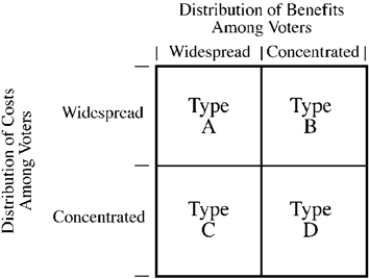Use the figure below to answer the following question(s) .
Figure 6-1 
-Figure 6-1 illustrates the four possibilities of the distribution of costs and benefits among voters for a government project. Programs that give subsidies to a small group of producers at general taxpayer expense would be considered
Definitions:
Crude Quantity Theory
A simplified version of the quantity theory of money suggesting that an increase in money supply leads to a proportional increase in prices.
M
A symbol often representing money supply in economic discussions, including various measures like M1, M2, and M3.
Q
Quantity, frequently used in economic equations and discussions to denote the amount of goods produced or consumed.
PQ
The product of price (P) and quantity (Q), often used in economics to calculate total revenue or expenditure.
Q6: The change in nominal GDP will always
Q84: The more elastic the supply of a
Q105: Public choice theory assumes voters, politicians, and
Q142: If a used car dealer purchases a
Q163: If education creates external benefits,<br>A) actual market
Q165: When a tax is imposed on a
Q168: Which of the following is the most
Q193: You buy 100 shares of IBM stock
Q196: After the ban on the production and
Q232: Anna, a U.S. citizen, works only in